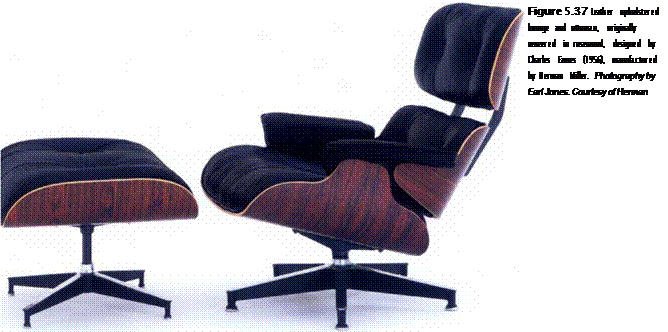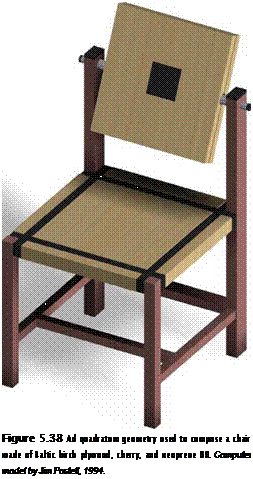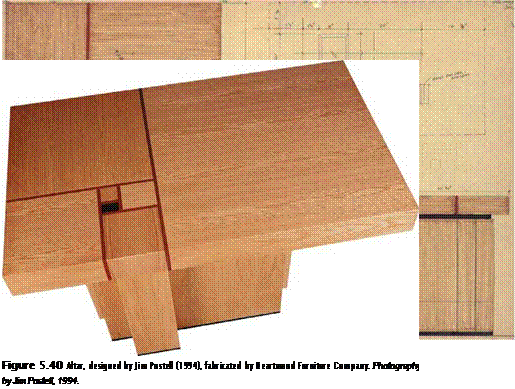![]() What distinctions can be made between aesthetics, a personal reaction to physical or visual stimuli and is subjective. Pleasure is revealed by sensation through the tactile nature of materials, finishes, and comfort as well as the visual nature of color, shape, and form. For centuries, delight has been associated with concepts of pleasure; however, delight elicits a range of emotional reactions (positive and negative) closely linked to the notion of arousal.
What distinctions can be made between aesthetics, a personal reaction to physical or visual stimuli and is subjective. Pleasure is revealed by sensation through the tactile nature of materials, finishes, and comfort as well as the visual nature of color, shape, and form. For centuries, delight has been associated with concepts of pleasure; however, delight elicits a range of emotional reactions (positive and negative) closely linked to the notion of arousal.
Arousal theory has been influenced by the work of Daniel Berlyne, Joachim F. Wohlwill, Albert Mehrabian, and James Russell during the 1960s and 1970s. Laboratory work in experimental aesthetics and studies in the physical environment conclude that pleasure is related to the observer’s level of arousal, and arousal is influenced by the uncertainty created by the environmental stimulus.20 The pleasure-arousal hypothesis is based on Berlyne’s finding that pleasure and stimulus uncertainty are related. Berlyne theorized that pleasure resulting from exposure to a visual stimulus increases with stimulus uncertainty until the observer’s arousal level becomes uncomfortably high, at which point pleasure decreases.
If pleasure results from exposure to a stimulus, then we might consider unpleasant as well as pleasant stimuli as inherent within the nature of beauty. The bombing of a Basque town during the Spanish Civil War inspired Pablo Picasso’s painting Guernica. The painting intends to make the viewer feel the horrors of the war, but the experience results in the sensation of pleasure.
Traditional ideas of beauty suggest that geometry, proportion, and form inspire and please both the mind and the soul. In architecture, design, and art, ideas about beauty, geometry, proportion, and form fuel the sensation of delight. In furniture design, placement and orientation in space along with the visual and tactile experiences generate delight.
Beauty
When I’m working on a problem, I never think about beauty. I think only how to solve the problem. But when I have finished, if the solution is not beautiful, I know that it is wrong.21
—Buckminster Fuller
Leon Battista Alberti (1404-1472) established theoretical principles that defined beauty as "the harmony and concord of all the parts achieved in such a manner that nothing could
be added or taken away or altered except for the worse."22 Alberti’s statement emphasizes wholeness—an important concept to consider in design. Alberti describes the joining of lines and angles as an important and difficult task. Furniture designers must contend with the complete integration of structure, utility, spatial context, material, and aesthetics, in which any one factor can disrupt the harmony of design. Achieving harmony in furniture design is an ever-present challenge.
One way to understand the idea of aesthetics in furniture is to consider notions beyond beauty. Furniture design can be about comfort and production techniques, as well as about the organization of parts into a coherent whole. Consider the Eames lounge chair and ottoman designed by Charles Eames for Herman Miller (Figure 5.37). The lounge and ottoman share intertwined relationships of material, form, and use.
The Eames lounge chair and ottoman reflected Charles Eames’s awareness of tradition as well as his way of approaching a problem. For comfort, he rediscovered traditional upholstery components: down and feather-filled cushions and luxurious leather. For greater resilience, he incorporated the rubber shock mounts invented for the plywood chair. The chair is made up of three separate leather cushions, each with a curved plywood back, shock-mounted to clearly visible connecting elements. This separation of parts made it possible for the first time to mass-produce a chair as soft and deep as the English "club chair." Eames’s sensitive uniting of old and new idioms made his lounge a chair of resounding beauty and comfort.23
The totality of the expressed components achieves a sense of a whole out of carefully integrated parts. The chair reveals a disciplined order that demonstrates the capabilities of the designer and offers inspiration for other designers to build upon.
 |
Beauty is not limited to aesthetics. A significant aspect of beauty lies in the experience of furniture, and in this regard, beauty is something that is entirely tangible. The essence of beauty is intertwined with use, experience, and aesthetics. Beauty is a complex
phenomenon that is dependent on several tangible and intangible components working together.
Aesthetics comes from the Greek word aisthetikos, meaning "perceptive, especially by feeling."24 Aesthetics is the branch of philosophy dealing with the beautiful. Aesthetic theories intertwine with design principles. They serve as lenses through which judgment is made about formal qualities in furniture design. In the design phase, aesthetics are studied and modified by using drawings and models. These efforts require a thorough understanding of geometry and the communication skills necessary to explore and refine design ideas.
Geometry
Euclid’s Thirteen Books of the Elements was written around 300 BCE and was translated by Sir Thomas L. Heath in the nineteenth century. It presents the rules and principles of geometry, with a focus on lines, angles, planes, circles, ratios, proportions, polygons, and cylinders. It is an important source that covers the mechanics of geometry. Geometry is the foundation of composition. In order to conceive, design, and draw furniture, one must have a technical or intuitive knowledge of the rules and principles of geometry.
Proportion
"Man is the measure of all things" according to Protagoras, the Greek philosopher of the fifth century BCE. Proportion is derived from relationships within the human body (digit,
 palm, cubit [1 cubit equals the length of the forearm when extended], head, arm, proportion of elegance) and from relationships between door size, windowsill height, room dimension, and so on. Furniture responds proportionally to the human body and to the interior space in which it is placed.
palm, cubit [1 cubit equals the length of the forearm when extended], head, arm, proportion of elegance) and from relationships between door size, windowsill height, room dimension, and so on. Furniture responds proportionally to the human body and to the interior space in which it is placed.
Ad Quadratum and Ad Triangulatum Ad quadratum ("by the square") and ad triangulatum ("by the triangle") are geometric systems that designers have used to create unity in their work. Ad quadratum is based on the ratio of the side of any square to its diagonal (1:ff2). Spatial and formal relationships in the chair’s components and inlay shown in Figure 5.38 were derived using ad quadratum geometry.
The Golden Section
The Golden Section is a ratio that results when a line is divided so that the short segment has the same relationship to the long segment that the long segment has to the sum of the two parts. It works out to be a unique mathematical proportion 1:1.6182 . . . as well
 |
 |
as.6182:1.25 The Golden Section was the principal proportional system used to resolve the plan, elevation, and section of the altar shown in Figures 5.39 and 5.40.
Analysis of the geometric basis for many design elements that employ the Golden Section illustrates an almost exact mathematical progression known as the Fibonacci series of numbers 0, 1, 1,2, 3, 5, 8, 13 . . . in which each number is the sum of the two numbers preceding it.
The Golden Section and the Fibonacci series are related. Regarding the Fibonacci series, continuing to divide the larger number by the one that directly precedes it will, as the numbers increase, approach the Golden Section (1.6182 . . .)
The Golden Section and the Fibonacci series are proportional systems that have influenced aesthetic theories for centuries. From the Renaissance to modernism, systems of geometry have been inherently, intuitively, and deliberately incorporated in the design of furniture. Beginning with the shift to functionalism, however, the importance of geometric systems began to give way to more humanistic considerations of commodity, social use, and ergonomic theories. In today’s culture of digital design, there has been a reconsideration of Euclidean geometry and the Golden Section for more complex and organic formal possibilities through the use of digital hardware, digital software, and digital production machines.



